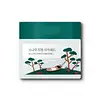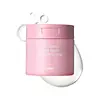What's inside
What's inside
 Key Ingredients
Key Ingredients

 Benefits
Benefits

 Concerns
Concerns

No concerns
 Ingredients Side-by-side
Ingredients Side-by-side

Pinus Densiflora Leaf Extract
AntimicrobialWater
Skin ConditioningPropanediol
SolventDipropylene Glycol
Humectant1,2-Hexanediol
Skin ConditioningCentella Asiatica Extract
CleansingBetaine
HumectantSodium Hyaluronate
HumectantButylene Glycol
HumectantCaprylyl Glycol
EmollientCentella Asiatica Leaf Extract
Skin ConditioningCinnamomum Camphora Leaf Extract
MaskingPanthenol
Skin ConditioningGlycoproteins
Skin ConditioningEthylhexylglycerin
Skin ConditioningDipotassium Glycyrrhizate
HumectantMelia Azadirachta Leaf Extract
Skin ConditioningMelia Azadirachta Flower Extract
Skin ConditioningMadecassoside
AntioxidantAsiaticoside
AntioxidantAsiatic Acid
Skin ConditioningMadecassic Acid
Skin ConditioningHydroxyacetophenone
AntioxidantGluconolactone
Skin ConditioningCapryloyl Salicylic Acid
ExfoliatingC12-14 Pareth-12
EmulsifyingSuccinic Acid
BufferingAmmonium Acryloyldimethyltaurate/Vp Copolymer
Sodium Citrate
BufferingPantolactone
HumectantDisodium EDTA
Pinus Densiflora Leaf Extract, Water, Propanediol, Dipropylene Glycol, 1,2-Hexanediol, Centella Asiatica Extract, Betaine, Sodium Hyaluronate, Butylene Glycol, Caprylyl Glycol, Centella Asiatica Leaf Extract, Cinnamomum Camphora Leaf Extract, Panthenol, Glycoproteins, Ethylhexylglycerin, Dipotassium Glycyrrhizate, Melia Azadirachta Leaf Extract, Melia Azadirachta Flower Extract, Madecassoside, Asiaticoside, Asiatic Acid, Madecassic Acid, Hydroxyacetophenone, Gluconolactone, Capryloyl Salicylic Acid, C12-14 Pareth-12, Succinic Acid, Ammonium Acryloyldimethyltaurate/Vp Copolymer, Sodium Citrate, Pantolactone, Disodium EDTA
Beta Vulgaris Root Extract
Skin ConditioningWater
Skin ConditioningDipropylene Glycol
HumectantMethylpropanediol
SolventButylene Glycol
Humectant1,2-Hexanediol
Skin ConditioningTheobroma Cacao Seed Extract
AntioxidantGardenia Florida Fruit Extract
Skin ConditioningPanthenol
Skin ConditioningTrehalose
HumectantDisodium EDTA
Xanthan Gum
EmulsifyingTromethamine
BufferingGluconolactone
Skin ConditioningAllantoin
Skin ConditioningGlycolic Acid
BufferingDextrin
AbsorbentCyanocobalamin
Skin ConditioningSalicylic Acid
MaskingHydroxyacetophenone
AntioxidantBeta Vulgaris Root Extract, Water, Dipropylene Glycol, Methylpropanediol, Butylene Glycol, 1,2-Hexanediol, Theobroma Cacao Seed Extract, Gardenia Florida Fruit Extract, Panthenol, Trehalose, Disodium EDTA, Xanthan Gum, Tromethamine, Gluconolactone, Allantoin, Glycolic Acid, Dextrin, Cyanocobalamin, Salicylic Acid, Hydroxyacetophenone
 Reviews
Reviews

Ingredients Explained
These ingredients are found in both products.
Ingredients higher up in an ingredient list are typically present in a larger amount.
1,2-Hexanediol is a synthetic liquid and another multi-functional powerhouse.
It is a:
- Humectant, drawing moisture into the skin
- Emollient, helping to soften skin
- Solvent, dispersing and stabilizing formulas
- Preservative booster, enhancing the antimicrobial activity of other preservatives
Butylene Glycol (or BG) is used within cosmetic products for a few different reasons:
Overall, Butylene Glycol is a safe and well-rounded ingredient that works well with other ingredients.
Though this ingredient works well with most skin types, some people with sensitive skin may experience a reaction such as allergic rashes, closed comedones, or itchiness.
Learn more about Butylene GlycolDipropylene Glycol is a synthetically created humectant, stabilizer, and solvent.
This ingredient helps:
Dipropylene glycol is technically an alcohol, but it belongs to the glycol family (often considered part of the ‘good’ alcohols). This means it is hydrating and gentle on skin unlike drying solvent alcohols like denatured alcohol.
As a masking agent, Dipropylene Glycol can be used to cover the smell of other ingredients. However, it does not have a scent.
Studies show Dipropylene Glycol is considered safe to use in skincare.
Learn more about Dipropylene GlycolDisodium EDTA plays a role in making products more stable by aiding other preservatives.
It is a chelating agent, meaning it neutralizes metal ions that may be found in a product.
Disodium EDTA is a salt of edetic acid and is found to be safe in cosmetic ingredients.
Learn more about Disodium EDTAGluconolactone is a PHA. PHAs are a great gentle alternative to traditional AHAs.
When applied, Gluconolactone has the same affect on skin as AHAs such as lactic acid. It helps dissolve the dead skin cells in the top layer of your skin. This improves texture and brightens the skin.
PHAs are more gentle than AHAs due to their larger structure. They do not penetrate as deeply as AHAs and take a longer time to dissolve dead cells. Studies show PHAs do not cause as much irritation.
Gluconolactone has some interesting properties:
In a 2004 study, Gluconolactone was found to prevent UV damage in mouse skin cells and has not been found to increase sun sensitivity. However, we still recommend wearing SPF daily.
This ingredient is is an created by reacting gluconic acid with an alcohol.
Learn more about GluconolactoneHydroxyacetophenone is antioxidant with skin conditioning and soothing properties. It also boosts the efficiency of preservatives.
This ingredient is not irritating or sensitizing.
Panthenol is a common ingredient that helps hydrate and soothe the skin. It is found naturally in our skin and hair.
There are two forms of panthenol: D and L.
D-panthenol is also known as dexpanthenol. Most cosmetics use dexpanthenol or a mixture of D and L-panthenol.
Panthenol is famous due to its ability to go deeper into the skin's layers. Using this ingredient has numerous pros (and no cons):
Like hyaluronic acid, panthenol is a humectant. Humectants are able to bind and hold large amounts of water to keep skin hydrated.
This ingredient works well for wound healing. It works by increasing tissue in the wound and helps close open wounds.
Once oxidized, panthenol converts to pantothenic acid. Panthothenic acid is found in all living cells.
This ingredient is also referred to as pro-vitamin B5.
Learn more about PanthenolWater. It's the most common cosmetic ingredient of all. You'll usually see it at the top of ingredient lists, meaning that it makes up the largest part of the product.
So why is it so popular? Water most often acts as a solvent - this means that it helps dissolve other ingredients into the formulation.
You'll also recognize water as that liquid we all need to stay alive. If you see this, drink a glass of water. Stay hydrated!
Learn more about Water